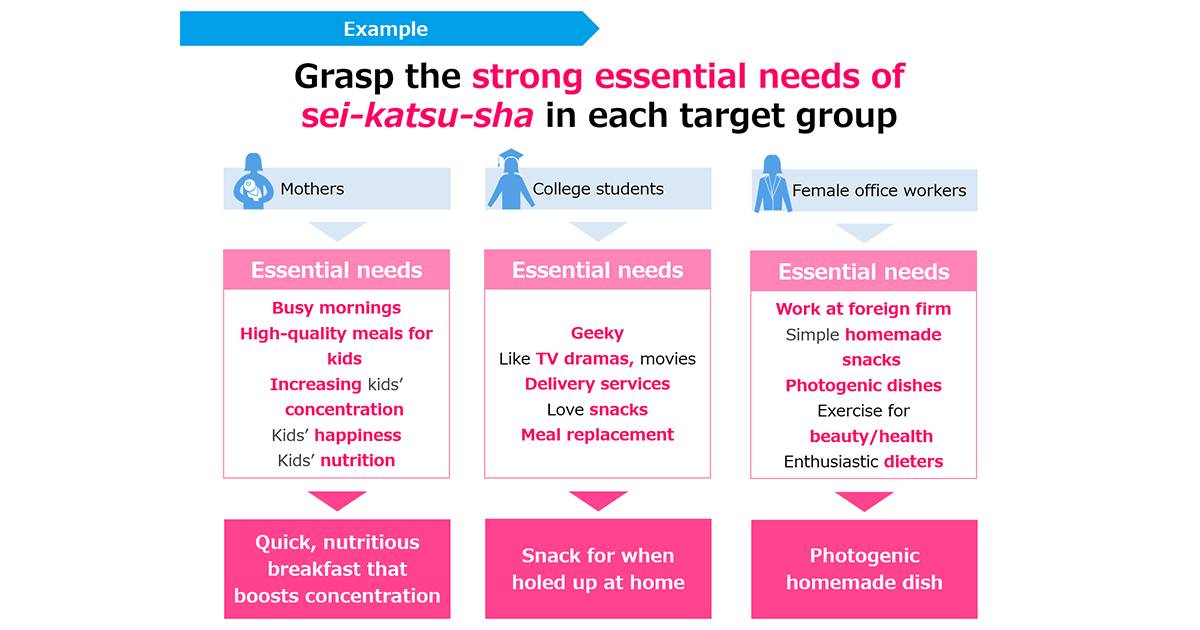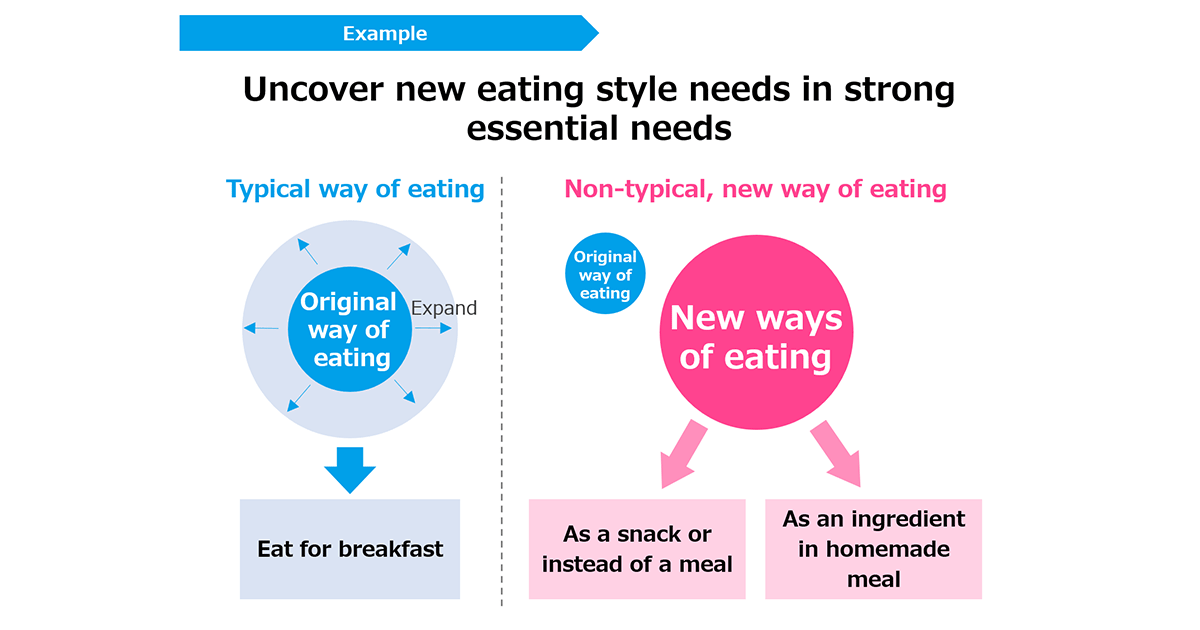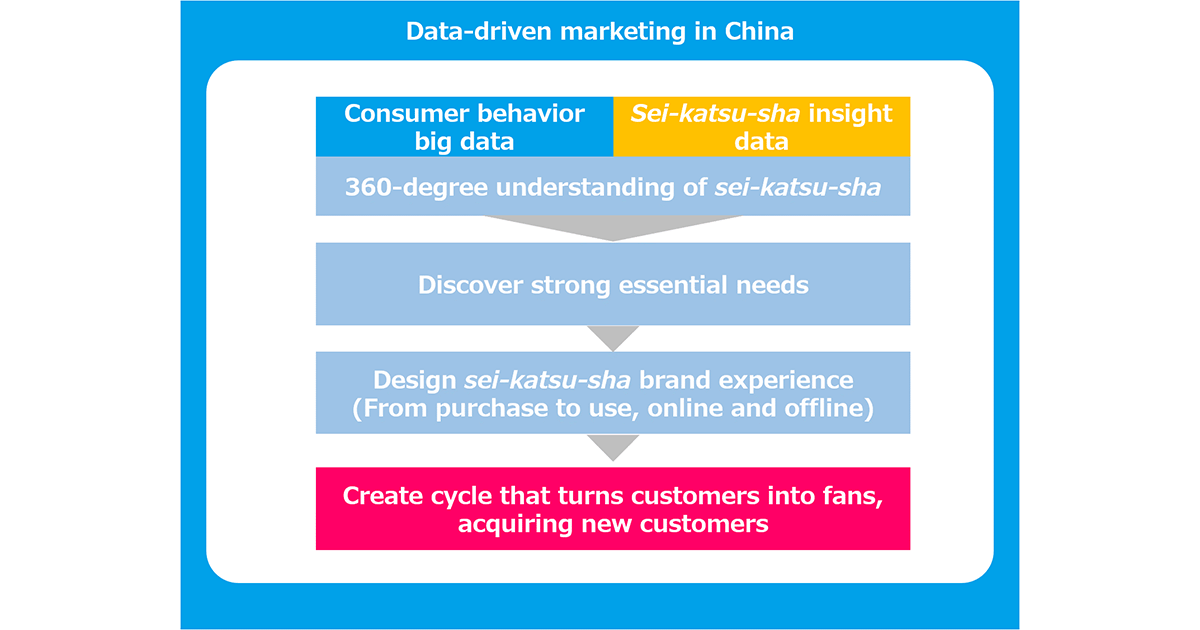- Viewpoints
- Services
The Hakuhodo DY Group introduced Sei-katsu-sha Data-Driven Marketing in 2014 and has been supporting companies’ marketing since by building databases and a rich lineup of solutions. In China, too, we have a system that enables us to provide full support in the data-driven marketing domain. Continuing on from Part 1 of this article, where Surui Yang, a Planner in the Global Data Marketing Department of Hakuhodo’s Data-Driven Marketing Division, gave an overview of our data-driven marketing endeavors in China, in Part 2, she gives an example of our Sei-katsu-sha Data-Driven Marketing in action in China.

Case study of the Hakuhodo DY Group’s Sei-katsu-sha Data-Driven Marketing in action in China
The following is a case study to deepen understanding of the characteristics of the Hakuhodo DY Group’s data-driven marketing.
This example is the cereal brand of a food manufacturer. The initial challenge was to acquire new customers through Chinese e-commerce channels to increase sales. To address the challenge faced by our client, rather than just creating an effective media plan, we believed it important to create a virtuous cycle for acquiring new customers by building a quality brand experience and increasing the number of brand fans in China.
To achieve this goal, our consumer behavior big data included e-commerce behavior data, purchasing data, and online behavior data. The sei-katsu-sha insight data used included fixed point survey data, word-of-mouth data, and search word data.
First, analysis conducted using e-commerce behavior data and fixed-point survey data found that customers that might potentially become new fans were concentrated in the mother, college student, and female office worker cohorts. Next, we used online behavior data, word-of-mouth data and search word data to analyze each of the three segments, and found that their needs differed greatly.
Mothers are busy in the morning, but want to give their children a high-quality, nutritious breakfast. By doing so, they hope to improve their children’s ability to concentrate and lift their grades. Therefore, we developed an approach for mothers centered around a quick, nutritional breakfast that would increase their children’s concentration.
The college student cohort likes shutting themselves away in their dormitories and homes, watching TV dramas and movies, and ordering from delivery services. They also love snacks, sometimes eating the target product instead of a meal. So the approach we designed for them was a snack for when they are holed up at home.
We discovered that the last group, female office workers, contains many who work for non-Chinese companies, and that they like making simple homemade snacks when they have time to spare. Plus, they place importance on how photogenic their food is. In response to these needs among female office workers, we designed an approach around photogenic homemade dishes.
As you have probably realized, we gave the same product different product usage scenarios for people with different needs. In this way, we improved the product use experience.

Incidentally, this cereal brand is predominantly eaten for breakfast in the country where it was sold originally. However, our analysis of Chinese people revealed that for some, new, non-typical ways of eating the product were better suited to their needs, rather than having it for breakfast, for example, having it as a snack or an ingredient in a homemade dish. Therefore, for China, we decided to propose fresh ways of eating the product that were different from the typical way of eating it, and better suited to the needs of Chinese. As a result, we were able to create new business opportunities in China by creating buzz for the product there.

Ultimately, we designed three quality brand experiences from online to offline, purchasing to use, tailored to the three different needs, and implemented pinpointed marketing approaches for each target. As a result of these measures, in addition to the initial goal of increasing the number of new customers through e-commerce channels, we succeeded in creating a large number of brand fans. Moreover, these fans independently shared information about the product in their daily lives and on the Internet, creating a purchasing cycle where fans acquired new customers.
Implementing data-driven marketing to create a virtuous cycle that produces effects
Chinese sei-katsu-sha are advanced sei-katsu-sha. So in today’s China, it has become critical to be able to undertake advanced data-driven marketing and not just improve the efficiency of media distribution.
We integrate consumer behavior big data and sei-katsu-sha insight data to gain a 360-degree understanding of people and identify their strong essential needs. We then design and implement an overall brand experience, from purchasing to use, online to offline, that responds to those essential needs. In this way, we develop brand fans and create a cycle for acquiring more new customers.

In China, advanced data-driven marketing is required for advanced sei-katsu-sha. We provide data-driven marketing for those advanced sei-katsu-sha.

Hakuhodo Inc.














